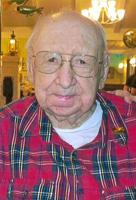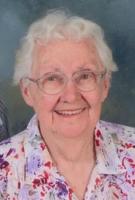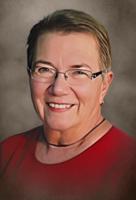Ten years later, there are the cold, hard numbers.
There’s 22 — May 22, that is — the date on which the rain-wrapped tornado appeared on the western outskirts of Joplin.
There’s 5:41, the moment the tornado touched Jasper County soil, near the Kansas/Missouri border.
There’s 38 — the number of minutes the multiple-vortex storm hugged the Earth.
And there’s 161 — the number of men, women and children who died in the deadliest tornado strike recorded since 1947.
But there's no precise number of tornado survivors — the people injured by the storm and those who escaped injury but lost loved ones or suffered extensive property damage.
The Joplin Globe recently sat down with a half-dozen tornado survivors to see how they are coping today with one of the most traumatic moments of their lives.
Debbie and Steve Leatherman
When the Joplin tornado spiraled down from the low-hanging clouds, it was little more than a thin EF0 funnel. But as it tracked east toward Joplin, it grew in size. By the time it thundered through Twin Hills Country Club, it was at EF1 intensity. Not long after, as it neared Iron Gates Road and Debbie and Steve Leatherman's house, it was approaching EF2 strength.
On the anniversary of the tornado — in 2012, in 2015 and most likely on Saturday — the Leathermans will quietly gather on their porch and purposely face northwest, the general direction from which the tornado had approached their home.
"We don’t necessarily choose to do anything special — we just sit and look at where (the storm) came in," said Debbie Leatherman, a retired Joplin High School teacher of nearly 40 years. "We don’t do it every year, but we are definitely anniversary-aware. It’s a private moment for us."
She and her husband, a fellow Joplin High School instructor who will retire later this month, had just reached their home, located on the western side of Iron Gates Road, after attending the high school graduation ceremony. On their drive home, they said, the tornado sirens sounded, and the western horizon looked dark and menacing.
Steve Leatherman said that he remarked that the sky did not look good as he entered their house. When he glanced at the television and saw the radar screen “filled with orange,” he turned and stepped back outside, staring off to the west. What he saw, he said recently, drained the blood from his face.

On several May 22 anniversaries, Debbie and Steve Leatherman have spent the afternoon on their porch looking at the direction from which the tornado hit their property. They believe their home was one of the first ones hit by the 2011 tornado. GLOBE | ROGER NOMER
He yelled for his wife to run to the basement, despite the fact that she was still in the dress she’d worn to graduation and was barefoot, her shoes near the front door. Their dog, Sugar, followed them but turned halfway down the stairs and bolted back up, seeking comfort beneath their bed, her “safe spot.” Debbie Leatherman tried to follow her, but at the top of the stairs, she could hear “something bad happening” to the house. Steve Leatherman shut the basement door, and together they made their way to the concrete-walled shelter, where they crouched and held each other. They heard the house above their heads being torn apart.
They rode out the storm. Afterward, when they tried to exit the basement, debris had pinned the door shut. Steve Leatherman managed to crack it open a bit, peering out. Their 3,800-square-foot home was gone, erased.
“We just came up the stairs to ... to just nothing,” he said.
Both were in a deep shock. Staring through the crack, Steve Leatherman began calmly listing portions of their home and property that had been wiped away by the storm. Beside him, his wife could only think: “OK, we can fix that.”
She never cried, but at one point her voice reached hysterical heights.
“You’ve got to stop screaming,” he told her.
Neighbors rescued the Leathermans from the basement. Only later would they discover their home was one of the first to be destroyed by the tornado. In fact, a video from a storm chaser, now famous on YouTube, filmed a poof of debris rising from the ground. The Leathermans are convinced that debris was their home the moment it was hit by the tornado.
But the Leathermans were safe and uninjured. They would soon be sheltered and fed by kind neighbors. That Sunday night, sleeping in a strange bed in a strange house, they held each other and tried to calm down.
Later, they stayed for more than a month with friends on the other side of Joplin before moving into a rental house. They eventually began rebuilding their present home on the same spot as their former Iron Gates home.
The Leathermans mourned their dog's disappearance, figuring she was buried beneath the mounds of debris. Yet the dog somehow survived. The winds had picked her up and tossed her into a drainage ditch on the opposite side of the Iron Gates Road, where she suffered a broken back and paralysis to both hind legs. She suffered through the pain and rains, thunder and lightning for two days before she was discovered, rescued and transported to the Joplin Humane Society. Her picture was spied on the shelter’s Facebook page by Debbie Leatherman’s sister-in-law, and the three were eventually reunited.
“There were a lot of (happy) tears that day,” she said.
Each May 22 anniversary “means something to us,” Debbie Leatherman said. “We choose to spend it just the two of us. It’s very much a spiritual moment for (us), one for all the blessings we have in our lives.”
Without a doubt, she continued, “we have been so blessed these last 10 years.”
Quinton Anderson
When the tornado reached St. John’s Regional Medical Center and roared east down 26th Street, it had reached EF4 and EF5 size, causing widespread and catastrophic damage. Nearly every house and structure on either side of 26th Street was flattened — including the home of Quinton Anderson.
Anderson, a Joplin High School student and athlete, was huddled in a hallway with his parents, Bill and Sarah Anderson, when the half-mile-wide tornado tore through their home.
The next thing the high school football player, then 17, remembered was waking up in the hospital with a broken back and fractured skull. The winds had picked him up and thrown him several city blocks, where he landed face down in a ditch. He was missing three days before his discovery and immediate hospitalization. Only later did he learn from his older sister, Grace, that he was an orphan, his parents dead and his childhood house gone.
Ten years later, Anderson, now 27, said he’s come to terms with the events that unfolded that Sunday evening — for the most part, that is.
“This question is always a tough one for individuals to ask me, knowing that my family and I lost so much on that day, but with each day, life always seems to be getting better one way or the other,” he said. “I understand that things like this can just happen in life, and ultimately, we can’t change the things or events or even control them — but we can control how we move forward and past them.
“With each day, I choose to move forward in a positive manner,” he continued, “and I try to make the world a better place than when I found it. I understand that the tornado was just a natural disaster, and I just happened to be in the path when it struck.”
While he coped with the loss of his parents, Anderson slowly recovered from his injuries. During that time, he was named captain of the Joplin Eagles football team his senior year, finished as a second runner-up in the annual Rudy Awards, was mentioned in ESPN’s “18 Under 18” series and was a guest in Jefferson City during then-Gov. Jay Nixon’s State of the State address.
Anderson left Joplin behind after his high school graduation to attend Harding University in Searcy, Arkansas, where he studied molecular and cellular biology. After graduating with honors from there in 2016, he moved farther south to Houston, “where I am currently a Ph.D. candidate at Rice University studying biochemistry and cellular biology,” he said. Currently writing, and soon defending, his doctoral thesis, he hopes to become a teaching professor, adding that he found his true passion “teaching and educating young minds.”
However, both his present and future successes, he said, ride solely on the shoulders of his parents.
“I often found myself asking this question a lot over the years about how the tornado and its impact has affected how I turned out, and quite frankly I’ve come to realize that it honestly has only had a very minimal effect on how I have turned out,” he said. “The man that I have become today is due to how I was raised by my parents. If the tornado affected anything, it would be simply taking my parents away before I was ready to lose them. My parents’ teachings were the foundation that I used to build the man I am today. I use what skills and knowledge they gave me to learn and grow from every scenario that life has thrown at me, and for right now, I think I am doing all right.”
While he can’t assume that moving away and leaving Joplin and its raw memories of the storm has helped him heal more quickly, he does embrace the opportunity to tell his story to others, particularly when they mention the storm-related scars he will always carry with him.
“I don’t think I moved away from my past at all — the scars follow me wherever I go, and they start a lot of discussions,” he said. “These discussions have allowed me to be able to tell my personal story and talk about it with others. I like to believe that these conversations over the years with the new people that I meet helps me heal a little bit more each time.”
But not all his scars are physical.
“The storm did give me (post-traumatic stress disorder),” he said. “That is something that I will have to live with, but I don’t let it define me. I look at it as something I can utilize to grow and mature as an individual and turn something negative into something positive."
Matt Stephens
As the tornado crossed Main Street, it was heading toward Franklin Technology Center and Joplin High School. Two blocks from the high school stood a house where Matt Stephens lived, near 22nd Street and Wisconsin Avenue.
Stephens knew this particular storm was a special one the moment he spied a chunk of someone’s roof go spinning past the living room window. That’s when he took off running, hoping to reach the bathroom for shelter.
He nearly made it.
“I jumped toward the opened bathroom door while curling into a fetal position, because I could hear (debris) hitting the house,” he said. “As I landed, the whole house exploded.”
The noise swirling around him was so loud “I could feel myself screaming, but I couldn’t hear it — I could just taste the blood in my mouth.”
Curled up on the floor, he felt an impact from an object that shattered the radius and ulna bones in his left arm. Another object clipped his leg, fracturing his tibia and femur, “and sending my kneecap flying off like it was a Frisbee.” The winds lifted him into the air and threw him against the base of a tree in a neighbor’s yard. When a third heavy object smashed the back of his skull, he said, “everything went black.”

Matt Stephens talks about how he lost his leg in the 2011 tornado during a recent Globe interview. GLOBE | ROGER NOMER
His next memory occurred five days later, when he woke up from a medically induced coma and found himself lying in a hospital bed at the University of Kansas Medical Center.
“I wake up, and I know my mom and dad are to the left of me because I can hear them crying," he told the Globe. "I’m groggy. A nurse tells me about a tornado that went through Joplin — I had been in the middle of it. A little bit later, she finally tells me that my (left) leg had been amputated. I look down and I can see the sheet lying flat. I just said, 'It’s just a leg,' and I pass out. Yeah, I accepted it pretty quickly. That was the easy part.”
Only later would he learn of his other injuries — a skull fracture, two spinal fractures, a shattered eye socket — and the 16 surgeries that followed to help correct them as best as possible.
As he sat beneath the Mercy Park gazebo earlier this month and related the details of that night 10 years ago, he did so without emotion.
“Telling this so many times to so many people, it’s become a story; I’ve almost taken myself out of it,” said Stephens, who still lives in Joplin. “That has become my therapy as far as getting past this. It’s like I’m telling someone else’s story, you know? If I make it sound like a story, it won’t feel like real life.”
He’ll be the first to tell you that his life since the tornado hasn’t been a happy one. He’s had to accept the fact that he’ll be walking on a prosthetic leg for the rest of his life, along with dealing with chronic back pain and fatigue. His mother died of colon cancer in early 2017. He also recently ended a long-term relationship.
“I’ve done stories where I screw on a fake smile and say everything is hunky-dory and fine," he said. "People want to hear happy stories, and for years I gave them that. But now I’m tired of that. I’m tired of happy stories and the false narratives.”

Matt Stephens walks recently long a trail in Wildcat Park. Among other injuries, Stephens lost a leg in the 2011 tornado and now struggles with daily pain and anxiety. One of his coping techniques is to walk in nature. GLOBE | ROGER NOMER
Today, Stephens helps his father find, clean and sell antiques at three booths inside an antique mall, which he enjoys. He also loves to partake in long, solo drives with no particular destination in mind; the hum of the tires on pavement helps soothe his anxieties. When he finds the right spot, he’ll pull over and investigate.
“It helps as a therapy; I like to stop at parks, lakes, streams and walk around a little bit if I’m not hurting too bad,” he said.
Physical therapy, meditation therapy and even medical marijuana haven't helped much. He also suffers from storm-related anxiety and stress.
“When does the quantity of life supersede the quality of life?” he said. “I could care less if I die at 50 and have led a life where I was pain-free or could manage the pain — I’d be happy with that. If I live to 100 and I’m hurting every day of my life, I don’t want that.”
Mason Lillard and Lage Grigsby
As the EF5 tornado pushed across Range Line Road, it destroyed a Pizza Hut, a Walmart Supercenter, the Academy Sports store and a Home Depot, where a truck sat in the parking lot. Inside, two young cousins huddled together.
Mason Lillard, then 10, and Lage Grigsby, then 14, were with their grandmother, Sharon Lillard, inside the truck the moment the tornado swallowed them. Their grandfather was inside the store. A phone call from Grigsby’s mother, Jessica, had warned them of the approaching storm; she urged them to abandon the truck. But there wasn't enough time. All Sharon Lillard could do was wedge Mason Lillard into the floorboard and Grigsby against the seat before the truck was lifted from its parking spot and tossed 300 feet through the air.
Mason Lillard was impaled by an inch-wide angle iron that pierced the roof of their truck, destroyed her shoulder blade as it entered through her back, broke seven ribs and punctured a lung before punching back out her side, missing both her spine and liver by less than an inch. Removing the metal from her flesh and mending the damage it caused required 13 operations. Grigsby, meanwhile, had been tossed from the truck at the moment of impact and suffered a deep cut in his head that was oozing brain matter when paramedics found him. Surgeons had to cut out about one-fourth of his brain during a six-hour surgery, stitching his head back together. He was later transported to Children’s Mercy Hospital in Kansas City for additional surgeries.
Both, surgeons later said, were lucky to have survived. Grigsby’s parents were told at one point that their son wouldn’t be able to walk, talk or even feed himself, but those predictions proved to be wrong.

Lage Grigsby and Mason Lillard (right) are cousins who were severely injured in the parking lot of Home Depot during the 2011 tornado in Joplin. They say they try to view what they went through as a situation in which they could have died but didn't. GLOBE | ROGER NOMER
Grigsby, who turns 25 in December, and Lillard, who turns 21 in November, are alive and thriving in 2021; both have come to grips with that day and their injuries.
“I’ve actually taken a really positive outlook on everything,” Lillard said. “I don’t know if it’s because I was so young and I could have died at a really young age or what, but I’m not bitter at all. I’ve had people tell me that I need to cover up my scars when they see my arms — that it’s gross and stuff like that — and I tell them, ‘No, I’m not covering it just because it offends you or grosses you out.’ It reminds me of something that I could have died from that day, and God saved me for a purpose.”
Grigsby — who will walk in a leg brace for the rest of his life, while also suffering from an occasional stroke and seizure — says his experience of the May 22 tornado “has actually opened up a lot of doors for me to spread the Gospel."
“I let people know my story and my struggles; when I go to Walmart and little kids come up to me to look at my leg, I’ll tell them what happened,” he said. “They’ll say, ‘Oh, I feel so sorry for you,’ and I’ll say, ‘No, don’t be.’ I love spreading the Gospel for people who are struggling with a (problem or situation). I tell them what I went through and to not give up, that there’s always a second choice, and you always have to keep going and overcome those obstacles.”
Both often mention their strong sense of faith. This is partly due to what the two glimpsed inside the truck the moment the tornado blanketed them. Lillard says she saw angels — the “butterfly people” described by a number of survivors that day — walking toward them. Grigsby says the same.
“God saved us,” he said.
While Grigsby says he suffers no anxiety from the tornado, Lillard struggled during most of her teen years. At the height of her anxieties, when the skies above her heads darkened and filled the air with thunder and lightning, she would kick out with her legs, one time even kicking a hole in a wall. But music has proved an effective therapy, allowing a singer’s voice through headphones to drown out the sounds of the raging storm.
“Now I enjoy playing in the rain again with my little cousins — I like the sound of rain again,” she said.
Lillard graduated from Jasper High School in 2019 and is now attending Crowder College. She’s already received her behavioral technical certificate to work with people on the autism spectrum, and she’s now working to become a professional emergency medical technician. Grigsby, who graduated from Webb City High School in 2015, is repairing small engines with his grandfather.
When a May 22 anniversary rolls around, Lillard said they joke about it to show that neither of them is intimidated by their memories.
“Honestly, it’s just another day for us," he said. "I mean, sure, we’ll remember it for the rest of our lives, but we try to look at it as a day where Lage and I could have died, but we didn’t.”



























Commented
Sorry, there are no recent results for popular commented articles.